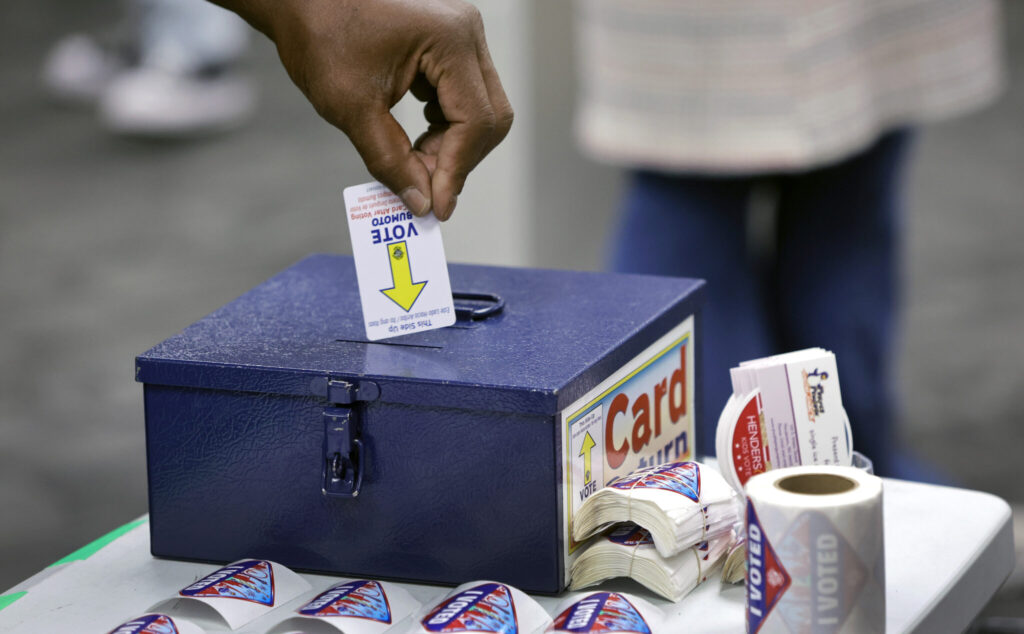Trump 2024 voter coalition/ youth vote 2024/ Black and Hispanic voters Trump/ Trump gains non-college voters/ AP VoteCast 2024 election analysis/ Newslooks/ WASHINGTON/ J. Mansour/ Morning Edition/ Donald Trump’s 2024 victory was powered by key shifts among young voters, non-college-educated groups, and some Black and Hispanic men, according to AP VoteCast. While Trump maintained strong support among traditional demographics, these new gains were instrumental in building a winning coalition. Vice President Kamala Harris saw limited support gains in urban, college-educated white men, but they were insufficient to counter Trump’s momentum.

“Trump’s 2024 Coalition Breakdown Quick Looks”
- Youth Support Rises: Trump saw increased support from younger voters, nearly doubling his share among 18-29-year-olds.
- Strong Non-College Appeal: Trump solidified his support among voters without a college degree, especially among non-white men.
- Diverse Gains: Trump’s coalition became more diverse, making inroads with Black and Hispanic men.
- Suburban Split, Rural Dominance: Harris narrowly carried suburban areas, but Trump held strong in rural regions.
- Urban Voting Patterns: Harris gained among white, college-educated men in urban areas, though Trump still performed well in urban non-college groups.
How Trump Built a 2024 Winning Coalition, AP VoteCast Shows
Deep Look
Donald Trump’s victory in the 2024 presidential election rested on a winning coalition composed of traditional Republican demographics along with crucial gains among younger voters, Black and Hispanic men, and voters without a college degree. Data from AP VoteCast, a survey of over 120,000 voters nationwide, highlights how these small yet significant shifts helped Trump reclaim the White House.
One of Trump’s key gains in this election came from younger voters. Although older voters continue to make up the bulk of his coalition, Trump expanded his reach among those under 45. In 2020, Trump won about 4 in 10 younger voters; in 2024, that rose to nearly half. Specifically, Trump increased his share among voters aged 18-29, with 46% of them voting for him over Vice President Kamala Harris, a marked rise from 36% in 2020. This growth underscores Trump’s increased appeal to younger Americans, likely influenced by his emphasis on economic issues and concerns about inflation.
Voters without a college degree represented another crucial segment for Trump’s coalition. Approximately 6 in 10 Trump voters this year did not have a college degree, compared to about half of Harris voters. With a majority of the electorate lacking a college education, Trump’s support among non-college-educated voters gave him a clear edge. In 2024, he captured 55% of this demographic, up from his 51% share in 2020. Notably, his gains within this group came from non-white men without college degrees, as well as younger, non-college voters.
While Harris maintained support among college-educated voters, making up 44% of the electorate, this was insufficient to counter Trump’s dominance in other demographics. Harris won a majority among college graduates, but Trump’s strength among voters without degrees played a significant role in his success.
Trump’s coalition in 2024 remained predominantly white, much like in 2020, but became more diverse due to notable gains among Black and Hispanic men. White voters accounted for about three-quarters of the electorate and mostly stayed loyal to Trump, showing little overall shift. However, Trump’s outreach efforts made an impact among non-white groups, particularly young Black men and Latino men under 45. Nationally, about 8 in 10 Black voters supported Harris, a decline from the 9 in 10 who backed Biden in 2020. Among younger Black men, about 3 in 10 cast their vote for Trump—nearly double his share in 2020. Meanwhile, Trump gained with young Latino men as well; roughly half of Latino men under 45 supported Harris, down from the 60% who favored Biden four years ago.
Harris’s narrow success in suburban areas was another key demographic battleground. Suburban voters made up nearly half of the electorate, and the split was close, with about half favoring Harris and 46% choosing Trump. Trump maintained his strong lead in rural areas, where he won about 6 in 10 voters, while Harris held sway with a similar margin in urban centers.
Education levels played a role in these regional differences as well. Trump made slight gains among urban voters without a college degree and among non-white voters in both urban and rural areas. This year, about 6 in 10 white men without college degrees in urban settings backed Trump, up from about half in 2020. Meanwhile, Harris saw improved support over Biden’s 2020 performance among white, college-educated men in urban areas, winning roughly two-thirds of this group.
Overall, Trump’s strategy to appeal to traditional Republican groups while gaining ground in diverse and younger demographics proved successful. His message on economic issues, combined with targeted outreach to traditionally Democratic groups, helped broaden his coalition beyond its 2020 makeup.
The 2024 election results provide insight into the shifting American electorate and highlight the effectiveness of Trump’s strategy to expand his appeal while retaining core Republican supporters. The AP VoteCast survey, conducted over eight days and incorporating a wide range of voters, shows that these incremental changes within key demographic groups collectively built a coalition capable of securing a Trump victory.







